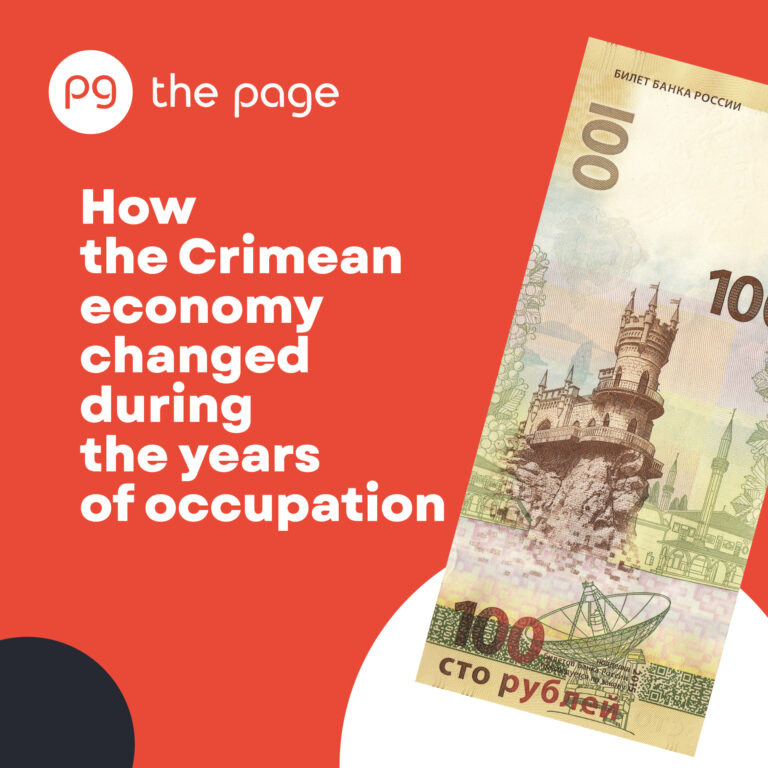
CRIMEA: A CHECKUP IN EXPECTATION OF A RETURN
In late February of 2014, “little green men” and Russian kazaks appeared in Crimea. After seizing the seats of the Council of Ministers and the Supreme Council of Crimea in Simferopol, they teamed up with local collaborationists and started to blockade Ukrainian military bases, airfields, and defense enterprises. Meanwhile, crowds of people with tricolor flags were rallying in Crimean cities, chanting “RUSSIA!”
Aggressive mobs even attempted to storm offices of government agencies a few times. At the beginning of March, kazaks and local thugs broke into the local military prosecutor’s office in Feodosia. “As I burst in, I saw a printer, so I started to batter it,” one of the local “heroes” of this event bragged. In a few weeks, he was awarded a medal “For the Return of Crimea.” Engraved on its reverse side are the dates of the Russian “special operation”: February 20 — March 18, 2014. It was on March 18 that the Russian government declared that Crimea was part of Russia.
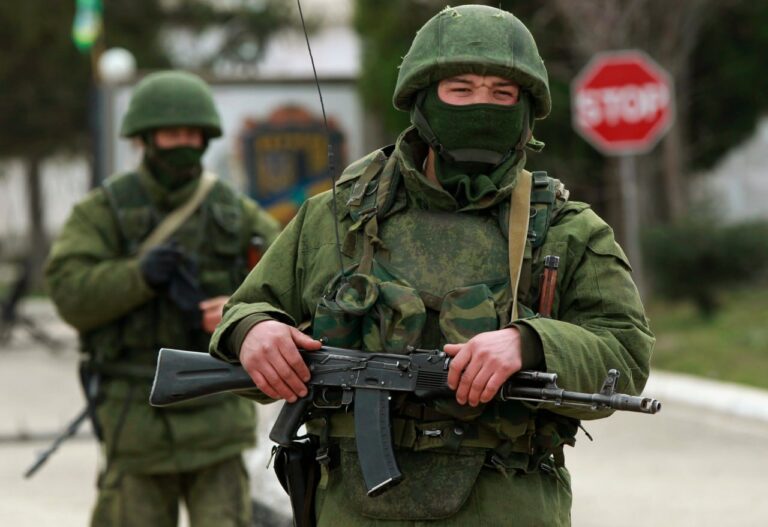
On February 27, 2014, the Russian military dropped their disguise. The open phase of the operation to seize Crimea started
The seizure of Crimea involved a number of horrific and tragic events that are yet to be investigated after it’s regained. These include the murder of two Ukrainian servicemen, as well as the abduction, torture, and murder of civic activists. The future de-occupation is already unquestioned, as both western experts and Ukrainian military leaders say. Thus, the chief of Ukraine’s Defense Intelligence, Kyrylo Budanov, is certain that the final chord of this war will be the retaking of Crimea.
But the matter The Page wanted to delve into was: What happened with the Crimean economy during the nine years under Russian rule? What will Ukraine take back with respect to natural resources, businesses, and their owners? How has Crimea changed economically during the years of occupation? Has the “universal prosperity” promised by Putin during the annexation really come to life? What will we have to rebuild?
This is the subject of The Page’s new special project, “Economic Crimea: A Checkup in Expectation of a Return.”
Spoiler: some newly emerged “Crimeans” who came from the Russian mainland after 2014 have been scared by the outlook to the extent that they decided not to wait for the turmoil to get real and moved back over the Crimean Bridge. Those Crimeans who are native to the land, although concerned, generally don’t flee.
What Ukraine lost after the occupation of Crimea
As estimated by the Center for Economic Strategy, the losses from the temporary occupation of Crimea amount to at least $135 billion, considering only the value of seized assets.
Ukraine has lost nearly 4.5% of its territory, or 27,000 square kilometers (10,425 square miles), which includes 755,000 hectares (2,915 square miles) of sowable land.
Among Crimea’s extractable resources, fuels are the most valuable. Considerable offshore deposits of carbohydrates have been explored near the peninsula, which are more promising than those on the mainland. Chornomornaftogaz, a subsidiary of Naftogaz of Ukraine, has been extracting up to 1.7 billion cubic meters of natural gas per year (8.5% of the total volume in Ukraine). The offshore deposits have been estimated to amount to 2 trillion cubic meters. In February 2020, Naftogaz filed an estimation with the international court of arbitration, claiming that its losses from the occupation of Crimea were $5 billion plus interest.
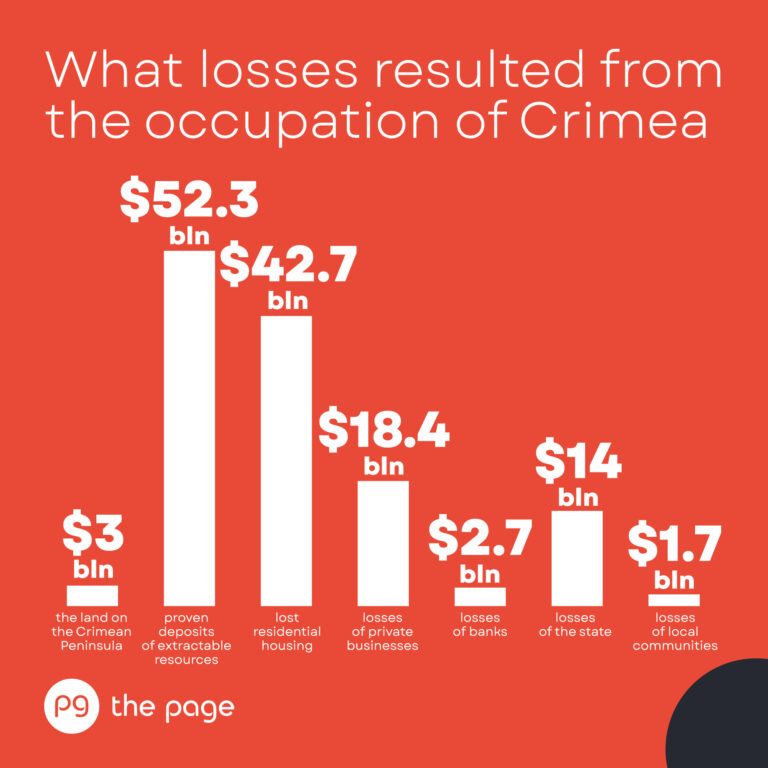
Crimea is also rich in limestone, which is crucial for both metallurgy and construction. Crimea TITAN, a plant in the north of the peninsula once owned by Dmytro Firtash’s Ostchem Holding, is the largest manufacturer of titanium dioxide pigment in Eastern Europe. The compound is used to produce dyes, plastics, rubber, cosmetics, and construction materials.
The Crimean Soda Plant located in Krasnoperekopsk produced soda ash, an important compound for the manufacture of glass and other industries.
During 2014, the new Crimean “authorities” nationalized all the assets of Ukrainian state-owned enterprises and government agencies. The losses were massive. For example, Ukrainian Railways estimated in 2021 that the value of its lost Crimean assets was UAH 3.2 billion (around $117 million).
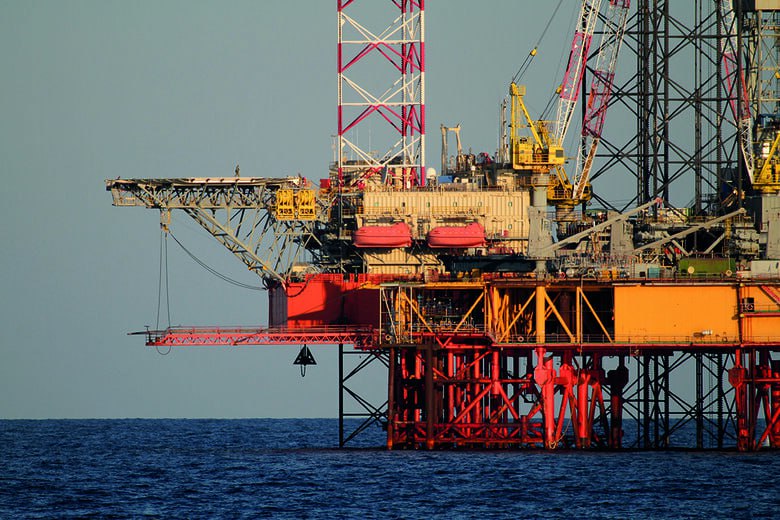
The offshore gas deposits near Crimea were estimated at 2 trillion cubic meters
On March 17, Chornomornaftogaz, the Feodosia Enterprise on the Supply of Oil Products, the Crimean property of Ukrtransgaz, and the assets of stevedoring companies and ports in the cities of Yevpatoria, Kerch, Sevastopol, Feodosia, and Yalta were nationalized. On March 26, 141 agricultural companies were nationalized, including the Massandra Winery, the Novyi Svit winery, Magarach, the Simferopol and Sevastopol wineries, and 170 recreational institutions, as well as cultural treasures.
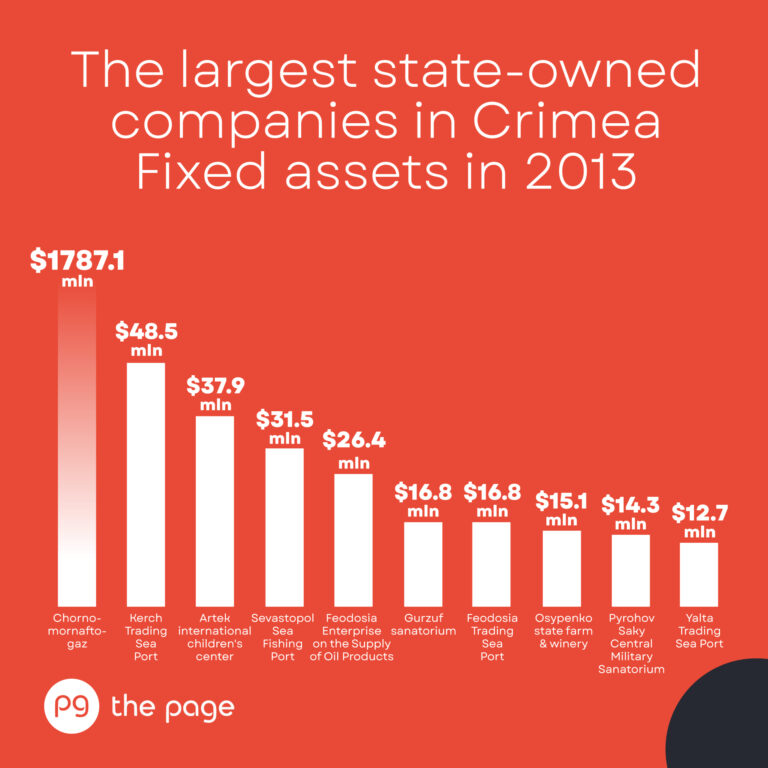
In April, nationalization was also extended to state-owned mining companies and 33 research and educational institutions, as well as all state-owned facilities in Sevastopol.
What Ukrainian oligarchs lost in Crimea
In autumn 2014, the occupation authorities started nationalizing the private assets of Ukrainian oligarchs. Ihor Kolomoyskyi was deprived of the PrivatBank property, three health resorts, 16 gas stations, and other assets. Dmytro Firtash lost the property of Krymgaz, 28 marketplaces under the Crimean Union of Consumer Societies, and Krymavtotrans businesses. Serhii Taruta was deprived of the Aivazovske therapeutic recreation complex and a nearby park. Rinat Akhmetov lost the Crimean property of DTEK Krymenergo and Ukrtelecom, Trimob, and Vega communications service providers. Petro Poroshenko lost 13 businesses.
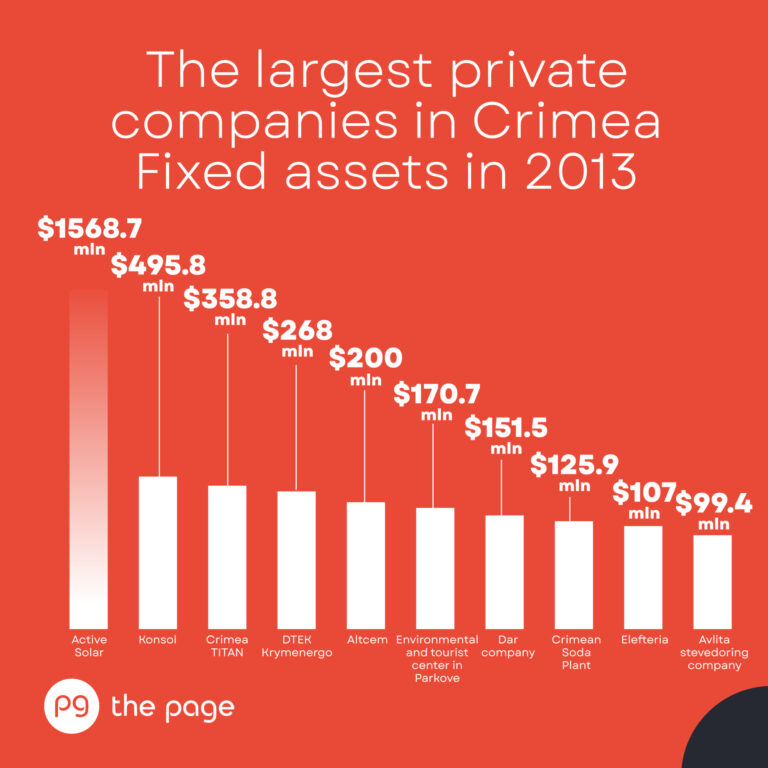
In late 2016, the Crimean “authorities” started selling some of the previously nationalized assets, often at low prices. Between 2016 and 2020, a total of 89 facilities worth RUB 15 billion, or $224 million, were sold. Many businesses couldn’t sustain operations after being sold.
Some of the Ukrainian owners said that they had sold their Crimean assets without breaking Ukrainian law but disclosed no details of the contracts. Rinat Akhmetov’s HarvEast holding company, which cultivated nearly 20,000 hectares in Crimea, was known to have been sold in 2016. In March 2017, Yurii Kosiuk’s MHP reported that it had sold three of its assets on the peninsula. The amount of the transaction was $77.5 million, while the book value was $88.4 million.
Unlike the Kyivstar telecommunications company, which was nationalized in Crimea, MTS managed to sell its assets on the peninsula in autumn 2014 for €17.7 million. At the end of 2021, Dmytro Firtash’s Group DF sold the Crimea TITAN plant. Ukrainian investigative journalists claim that the deal was made in violation of Ukrainian law and that the Russian buyers are Putin’s friends, the Rotenberg brothers.
What the invaders nationalized during the full-scale war
A new wave of seizures of property started after the full-scale invasion of Ukraine. Since February 2023, the Crimean “authorities” have adopted a decision on the nationalization of property owned by foreign nationals and countries that “commit unfriendly actions against Russia.”
The list included nearly 500 facilities. Among them were the Proliv Kerch Fish Cannery and the Almin construction materials producer, while 58 hectares of land near the sea in the village of Ordzhonikidze (Feodosia) were taken from Dynamo Kyiv Football Club LLC. The former deputy of the Crimean parliament and ex-deputy of the Verkhovna Rada, Nestor Shufrych, lost an unfinished building in Simeiz and the land on which it is located. Ihor Kolomoiskyi lost the Water Sports Center in Partenit.
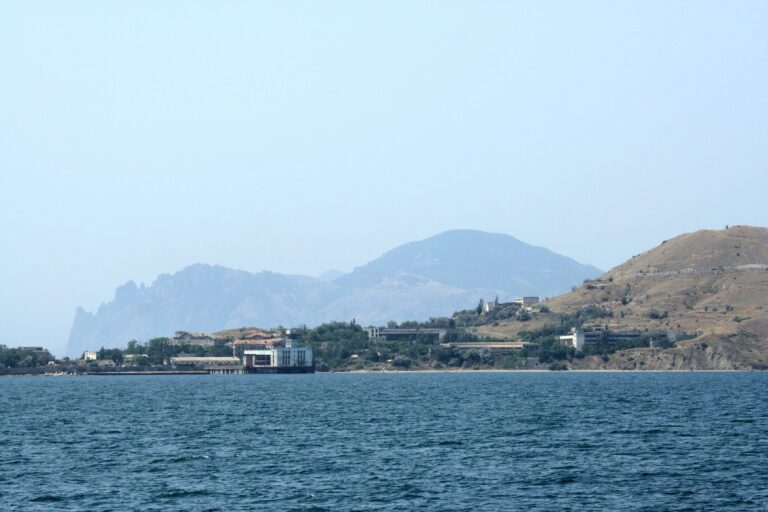
On the eve of the occupation, the lands of Dvoiakirna Bukhta JSC were considered promising for resort development
At the beginning of March, local media reported that the Crimean “authorities” were to put two plants with military background in Feodosia and Ordzhonikidze up for sale in 2023. The plants owned by Ukraine were the Feodosia Ship and Mechanical Plant and the Dvoiakirna Bukhta JSC. Nine years after the annexation, the Kremlin-appointed officials still couldn’t make them work.
Ilona Khmeliova, an international lawyer, has told The Page that although the government and companies need to contest the invaders in international courts and arbitration tribunals, the only hope is for the Armed Forces of Ukraine.
“Before the occupied territories are reclaimed, international courts and arbitration tribunals can adopt decisions on compensation. Some cases are considered in a very dynamic manner and are therefore quite promising, a positive example being the case of Naftogaz,” says the lawyer. “However, the challenge is not so much in securing the decisions of courts and arbitration tribunals as it is in the possibility of enforcing them. Russia ignores international institutions. Therefore, unfortunately, only the Armed Forces of Ukraine can fully guarantee the implementation of decisions on the return of assets. De-occupation is the best way to restore justice.”
Stay or leave: how entrepreneurs survive the occupation
Before the occupation, nearly 77,000 individual entrepreneurs were registered in Crimea, who generated an income of UAH 17.3 billion (around $2.2 billion) in 2013. In the total proceeds of all Crimean business entities, individual entrepreneurs accounted for 14.8%, which is more than twice the average Ukrainian percentage.
Data from the Russian register of individual entrepreneurs suggests that by the beginning of 2021, 39,000 of them were registered in Crimea. But in a year, the head of the occupation administration, Sergey Aksyonov, said that “their number has increased three times since 2014” to reach 65,000.
Armen Khachaturov, a Crimean businessman, is extremely skeptical about these claims. “These statistics are hard to figure out. The criteria on the Crimean Department of Statistics website change every year,” he told The Page. “But I can see that business activity has decreased, and it’s noticeable.”
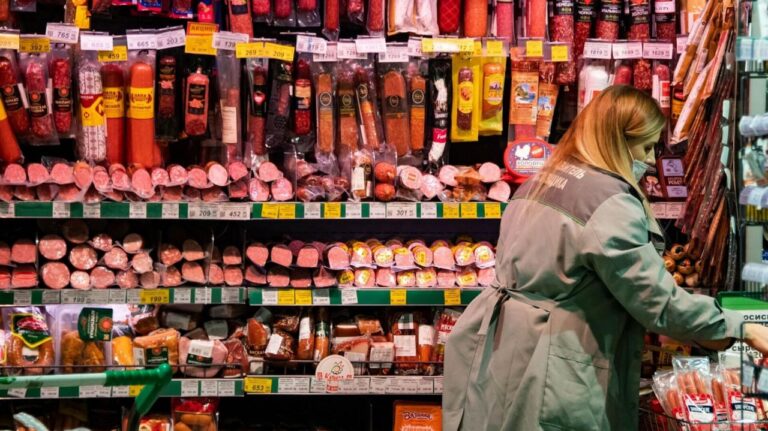
Crimean entrepreneurs say that working under Russian law turned out to be harder than under the Ukrainian legal system
The man’s colleague, Ruslan Maratov, agrees: “Speaking about large businesses such as banks, competition among them is totally gone. Only three banks are working: the Black Sea Bank for Reconstruction and Development, the Russian National Commercial Bank, and Genbank. They’re very sloppy and not customer-focused in providing services because they have nobody to compete with.”
Ruslan says that working under Russian law turned out to be harder than under the Ukrainian legal system. Before the annexation, he was a payer of the single tax. The tax administration allowed him to work under Ukrainian documents and tax rates — UAH 200 per month — for more than a year until the end of the provisional period. They simply converted the amount payable at the 1:3 exchange rate, so he had to pay 600 rubles a month.
However, after the provisional period ended, he discovered that Russian law has no concept of a single tax. He could work under the standard taxation scheme and pay 13.5% of the turnover. The paperwork also became more complicated.
Maratov provided cars for rent. He was dismayed to find out that, with a small car fleet, his business turned out to be unprofitable, since the license cost too much. However, Ruslan devised a way to evade the regulatory requirement: he found a license owner and formally leased cars to him.
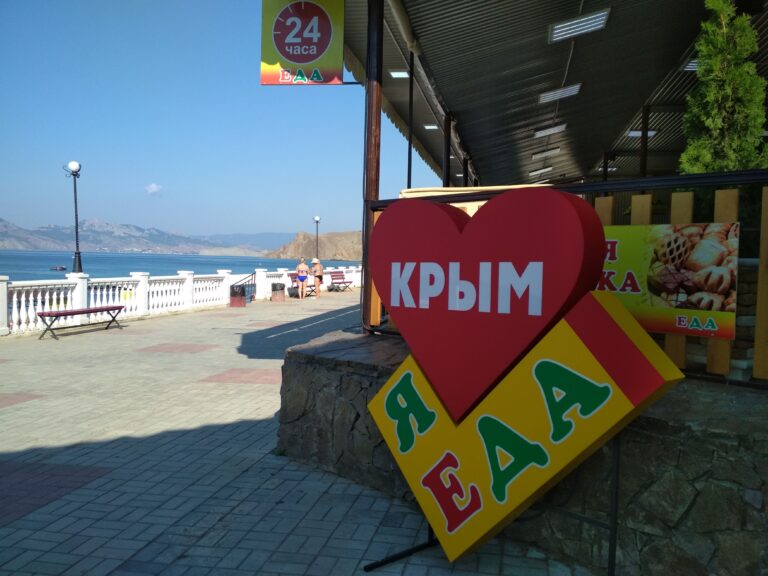
Although several vacation seasons were not bad, entrepreneurs raditionally complained about their quality
The businessman hasn’t noticed Crimean businesses closing en masse: most of the people he knows continue working, and only some have left. “Everybody has reoriented somehow,” says Maratov. “It’s hard to say whether they earn less now. Crimean entrepreneurs used to say that “the season was futile” after any vacation season, whatever their profits. They whined even in 2015, when all Russians went to Crimea and businesses still worked under Ukrainian tax rates, which was very beneficial.”
Ruslan has recently closed his car rental business as he grew tired of paperwork and nervous business.
“The season was futile” (с)
Despite the popular belief that Crimea earns most of its profits from being a resort, it’s not true. However, the vacation season has always been an indicator of how well the region is doing for its residents. Even before the occupation, in February 2014, local business owners were concerned not about the developments in Kyiv and rallies in Crimean cities but rather the impact of it all on the future season.
February 26, 2014. Residents of Feodosia gathered near the city council, frightened not only by the developments in the country but also by the prospectively failed vacation season
Officials from the occupation authorities are well aware of it, so they make up figures that aren’t quite realistic. Thus, in March 2022, they claimed that “the tourism industry has never seen such a powerful upturn as the current one.” According to them, while the tourist inflow to the peninsula in 2012–2013 was around 6 million people a year, 9.4 million people visited Crimea in 2021. Even in 2022, when the region was shaken by frequent explosions, there were 6.3 million tourist arrivals.
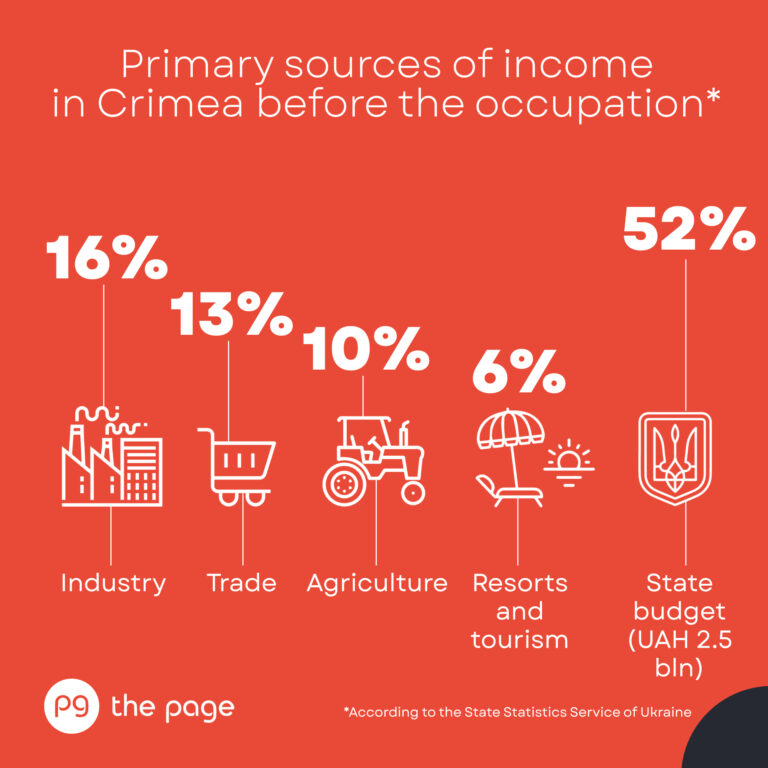
Ruslan Maratov says that the seasons were really good in 2015 and 2016. Now, the Russians have nowhere to go for a vacation but to Crimea, the Krasnodar Krai, Turkey, Egypt, and the UAE, since Europe is closed to them.
However, even in the media, travel agents share pessimistic expectations. Among the major challenges for the future season, the Russian Union of the Travel Industry names the absence of flights to Crimea, the lack of trains, and difficulties when crossing the Crimean bridge.
Negative experiences of the previous year force Crimean hoteliers to be more flexible about the prices — they offer discounts up to 70%. The peninsula thus became the most affordable resort for the Russians. However, the sales of tours to Crimea underperformed by a third as compared to February 2022. “Many travel firms had to close, and many boarding houses aren’t ready to open for the summer season because they have no money to pay their personnel,” the Russian Union of the Travel Industry reported.
According to Ruslan Maratov, a significant part of businesses still rely more on locals buying things throughout the year, which is why losses from a failed season, albeit significant, aren’t critical for everyone.
How statistics fiddle the revenues of Crimeans and the economy
The data published by the Crimean Department of Statistics suggest that the Crimeans are doing quite well: the average salary exceeds $500, which is enough to make a living for those who don’t have to rent a dwelling. However, people interviewed by The Page say that in practice, it’s not so bright, as many people earn half of that sum.
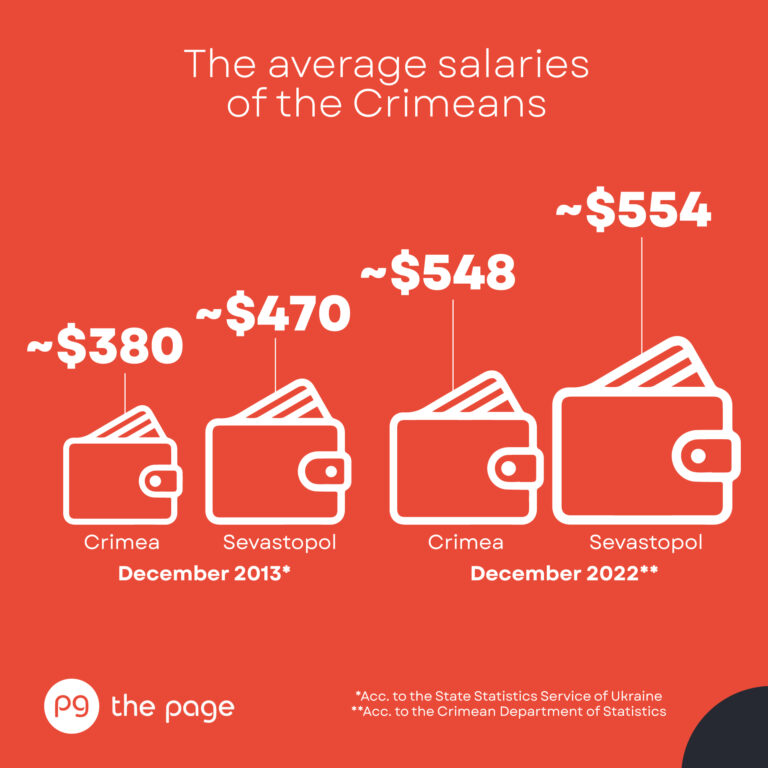
“The average salary seems acceptable because of the cops, the National Guard of Russia, the FSB, and the military, whose numbers in Crimea have multiplied since 2014. It’s them who more or less sustain the purchasing power of the population,” says Maratov. “But that’s a ballpark figure. Many don’t earn enough. For example, utility bills skyrocketed, and the rates are higher than in, say, Krasnodar Krai.”
Armen Khachaturov gives us a link to the local media, saying that prices on the market have risen by 169% within nine months. “At first, in 2014, when the pensions and wages of officials, teachers, and doctors rose, they were happy. But after the salaries rose, the ruble exchange rate fell abruptly, and food prices soared. And what do we look at as a reference? Food,” the businessman says.
People interviewed by The Page say that many of the locals believe their wealth is about the same as it was before 2014.
Statistical data are misleading about more than just salaries. For example, the Crimean Department of Statistics reports that the industrial production index in Crimea was 3.5% lower in 2022 as compared to 2021. However, the recession was also evident during the two years of the pandemic, which reports fail to mention. In Sevastopol, statistical data registered losses in the construction industry. The locals explain it with the decrease in demand for newly built houses. Many newcomers don’t see a future for themselves in Crimea.
How the Crimean population changed
Before the occupation, there were 2.35 million people living in Crimea, including 386,000 in Sevastopol. According to the Crimean Department of Statistics, the population of the peninsula in February 2023 was 2.49 million, including 550,000 in Sevastopol. Yurii Smelianskyi, a co-founder of the Institute for Black Sea Strategic Studies, believes these numbers are unrealistic.
“The invaders actively implemented an immigration policy or “importation of Russians” in the occupied Crimean territory, which became a part of the politics for the colonization of the peninsula,” he says. “At the end of 2016, the occupation authorities stated that the immigration into Crimea was three times higher than the natural loss of population in the region and the emigration from the occupied territory.”
According to Smelianskyi, the people who moved to the occupied Crimea were primarily the military with their families, members of special operations forces, officials, criminals from the North Caucasian republics of Russia, teachers, and healthcare professionals. Sometimes there were also businessmen and retirees, especially from northern Russian regions.
“During the entire period of occupation, a total of nearly one million people were imported into Crimea,” the expert says. “These were also Ukrainian citizens from the occupied Donetsk and Luhansk regions. In 2014 alone, there were almost 200,000 such immigrants in Crimea. Meanwhile, the statistics provided by the occupation authorities count only people with permanent residence in Crimea. A temporary stay isn’t accounted for, even if it lasts for a few years.”
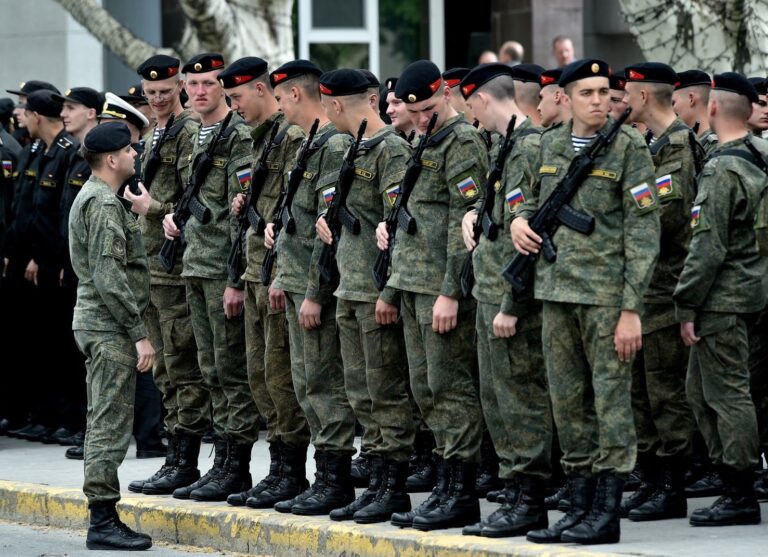
The Russian military contingent in Crimea increased significantly after the occupation
The Mission of the President of Ukraine in the Autonomous Republic of Crimea believes these estimations to be correct. “Statistical data generally didn’t include the Russian service members who took part in the militarization of the peninsula, the Deputy Permanent Representative of the President of Ukraine in the Autonomous Republic of Crimea,” Denys Chystikov, told The Page. “In addition, we registered people moving from Russia during the temporary occupation who weren’t included in statistical reports: these were families of service members and people in search of a better life.”
The Mission of the President underscores that the number of people who have arrived on the peninsula by the beginning of 2023 may amount to 510,000 even according to the official statistics of the invaders.
“We repeatedly said that, according to various expert estimations, at least half a million Russians had moved to Crimea, and their number can be as high as 800,000 or even more,” says Permanent Representative of the President of Ukraine in Crimea, Tamila Tasheva. “For a region with a population of around 2.5 million, it means that more than 20% of its residents have already been replaced. The worst situation with respect to the change in demographics is in Sevastopol, where, according to the invaders, the number of residents has increased by 45% during the nine years of occupation. This practice can significantly influence the reintegration of the city after it’s regained.”
The mission explains that one of the reasons why the Russian statistics differ from the real situation is the occupation authorities wishing to create a positive image and demonstrate massive budget investments in the peninsula.
For example, the statistical indicators of the gross regional product (GRP) of Crimea increased sharply. Back in 2013, per capita GRP was UAH 23,595 (~$2,800) in Crimea and UAH 28,765 (~$3,400) in Sevastopol, while in 2022, these measures were RUB 312,600 (~$4,200) and RUB 338,100 (~$4,500), respectively. This increase is caused by both actual factors such as the building of the Crimean Bridge, thermal power plants, and the Tavryda highway, and fiddling with numbers.
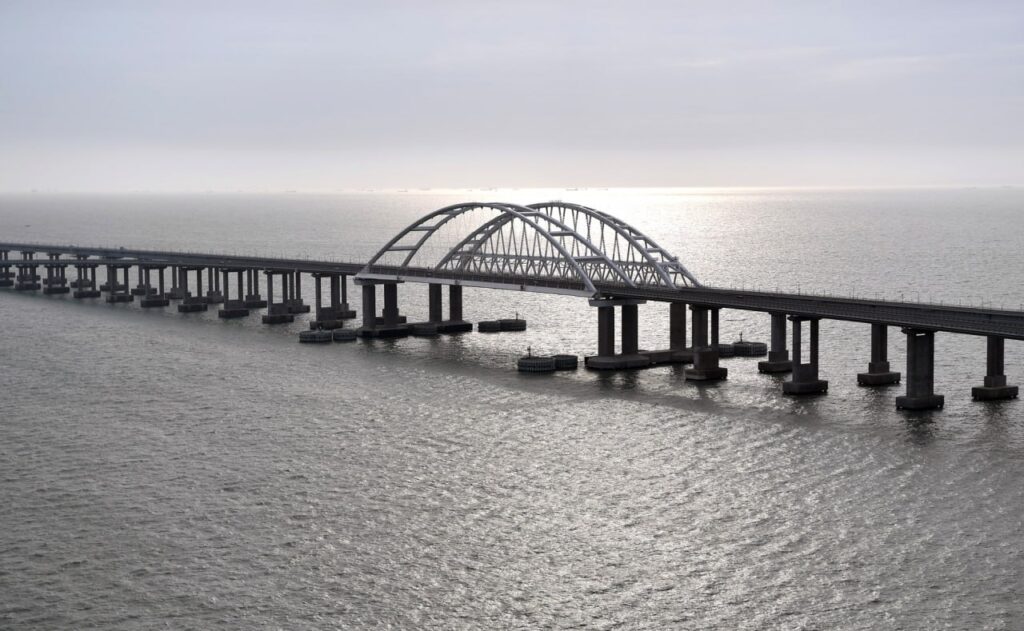
The Crimean Bridge was opened on May 15, 2018. This gave Russia the opportunity to illegally control the marine traffic through the Kerch Strait and to blockade Ukrainian ports in the Azov Sea at any time
A new methodology to measure regional economies has been introduced in Russia recently. The new estimations include the “virtual” services of homeowners living in their own accommodations. The owner is assigned a notional income equal to the amount they would have to pay if they had to rent the same dwelling. This made the Crimean GRP increase by 19% and boosted the GRP of Sevastopol by 53%.
The exact number of people who left Crimea after the annexation is also unknown. “The register of internally displaced people could have given us a rough estimate. However, such an estimation only exists in the imagination of a Ukrainian official,” claims Yurii Smelianskyi. “The majority of displaced people settled in other Ukrainian regions. Some of them moved to European countries and beyond, and some went to Russia. As a result, the estimated number of people who left varies between 100,000 and 240,000 as of January 1, 2022. That is, up to 10% of the pre-war population of the peninsula.”
The Mission of the President of Ukraine in Crimea knows about 53,000 internally displaced people from Crimea and another 38,000 who changed their registered residence to mainland Ukraine. “This is why the registered number is a rough estimate, while the actual number can be up to 100,000,” says Denys Chystikov.
What will happen after the de-occupation?
Because of the full-fledged war waged by Russia, people in Crimea are now not just uncertain about their future but outright scared.
“Everyone is scared. People move out in tremendous numbers. Dogs left by their owners are roaming the neighborhood,” says Armen Khachaturov. “My neighbor from Russia has left and now writes to me, “I’ll send you money, please feed my dog, I couldn’t take him through the crossing.” Another neighbor, a local, says that when shelling from Ukraine starts, he’ll put his family in a car and send it to Krasnodar Krai; as for him, he’ll stay to guard the house so that it’s not robbed.”
The majority of Crimeans fear the return of Crimea under Ukrainian control, Armen says, because the Russian media are frightening the population with “Nazi punishers” who consider all the residents of the peninsula to be traitors.
Trenches are being dug on many Crimean beaches. The locals are scared (video 18+)
The Mission of the President in Crimea affirms that an interdepartmental working group is already drafting the first priority steps the government will take after Crimea is reclaimed. On the agenda are the restoration of public authorities and personnel policy, the prosecution of those charged with international crimes and crimes against the basics of state security, the principles of amnesty and lustration, and the verification of documents issued by occupation institutions and verdicts of occupation courts. Other issues include the illegal stay of Russian citizens in Crimea, humanitarian policy, and the demilitarization of education and culture.
“We need to communicate this to our citizens, especially to Crimeans,” Tamila Tasheva says. “This is especially important with respect to the responsibility for crimes, including collaborationism. After the occupation, Russia started to extend its jurisdiction illegally onto the territory of the peninsula. This entailed compulsory passportization of residents, forced collaboration with occupation administrations, unlawful conscription to the Russian army, and coerced mobilization after the full-scale invasion. Residents of the occupied Crimea are our people. After the de-occupation, it wouldn’t be right to start a witch hunt and punish people for the mere fact of trying to survive under occupation.”
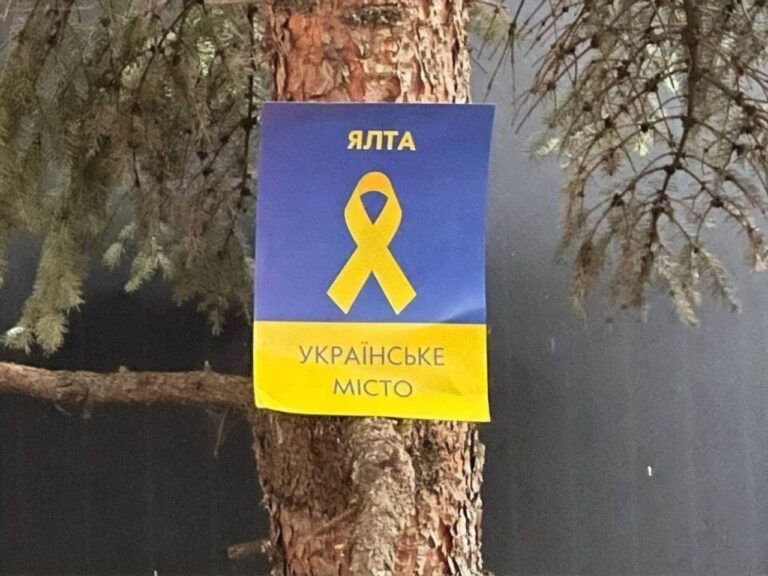
Tasheva asserts that entrepreneurs, healthcare professionals, electricians, firefighters, and even those who served in occupation administrations, provided that they held unimportant positions and didn’t take part in decision-making, have no reason to worry.
“A resident of the occupied peninsula who didn’t promote the occupation, wasn’t engaged in propaganda, didn’t support the war, and the like shouldn’t bear criminal liability for collaboration with occupation administrations,” the Representative says.
The problem is, not many Crimeans know about it as their network providers restrict access to Ukrainian web resources. However, it’s hard to ignore reality. “Even the Crimean “authorities” say, “Don’t fear shelling, everything will be fine.” It’s symptomatic,” Armen Khachaturov notes.
Meanwhile, past experience shows that the Crimeans recover from shocks quickly. During the Orange Revolution of 2004, some locals influenced by propaganda also feared “nationalists.” However, they quickly put up with the loss of their preferred candidate, Yanukovich, calmed down, and started preparing for the summer, a season many of them live off.
Oleksii Batourin
Valerii Moiseiev